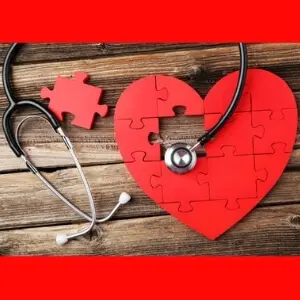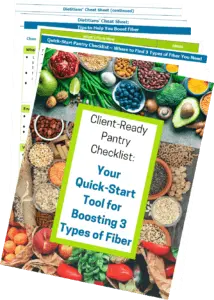
High Blood Pressure: What the Latest Guidelines Mean for You
Based on current guidelines on diagnosis and treatment of high blood pressure, 45.6% of U.S. adults now have hypertension and 12.1% have elevated blood pressure. Amidst all the headlines, it can be easy to miss what this means for you.
Here’s a call-out on some points too important to overlook….
Why Do Millions More Have High Blood Pressure?
People with blood pressure of 130-139 / 80-89 were previously identified as having “prehypertension”, a term that is now eliminated. Under the updated guideline, blood pressure in this range is called “Stage 1 hypertension”.
The goal is to more clearly identify and address risk. Previously, many people thought “prehypertension” was “pre-risk”. Research reviewed in developing the new guidelines — the first in 14 years — says this is untrue. Another review adds strength to the call for careful consideration of individual risk before adding medications for people with Stage 1 hypertension. But the point is to act on lifestyle and not delay.
High blood pressure is only to be diagnosed based on an average of at least two measurements taken at least a minute apart on at least two occasions. And blood pressure needs to be measured carefully, watching for factors like time at rest, talking, caffeine and exercise before and during measurement.
If blood pressure is “a little high”, finding doable steps for a healthier lifestyle is job #1. Click To TweetTreating Hypertension: Lifestyle for Everybody
“Risk-based treatment” is an essential focus of the guidelines, spelled out as being based on a risk calculator. For people with blood pressure of 120-129/<80, lifestyle is the recommended therapy; not medication. For those with blood pressure of 130-139 systolic (the first or top number) or 80-89 diastolic (the bottom or second number), medications are to be added only if 10-year risk is greater than 10%.
Six lifestyle interventions are recommended in the 2017 ACC/AHA guideline for people with elevated blood pressure or hypertension, regardless of whether or not they will also receive medications for blood pressure control:
- Eat DASH style ~ A diet rich in fruits, vegetables and whole grains; with low-fat dairy and other lean protein sources, dried beans, nuts and healthy oils (with limited saturated fat and sweets); can drop systolic blood pressure about 5 to 11 mm Hg. In a previous research brief, we explored some simple swaps you can try to DASH-ify your eating habits.
- Limit sodium ~ Cutting sodium by at least 1000 mg/day is a target that’s appropriate and realistic for most adults. The ACC/AHA guideline says reaching 1500 mg/day is ideal. But that’s a target that may not be realistic for many people. Good news: even cutting 1000 mg/day can drop blood pressure by 2-4 /1-2 mm Hg. Look beyond your salt shaker and focus on swapping out your most frequent processed food choices. With a few doable tweaks, you can reach that target of going 1000 mg lower.
- Choose more potassium-rich foods ~ Potassium blunts the impact of excess sodium on blood pressure, so the ACC/AHA guidelines encourage choosing foods with more potassium. But you’ll automatically get more if you follow point #1 and boost vegetables, fruits, legumes and include low-fat dairy. The guidelines suggest that highest levels of potassium can drop systolic blood pressure by about 4 mm Hg.
- Drop a few pounds ~ Aim to lose (and keep off) at least 2 pounds if your waist has expanded over the years. For each 2-pound loss, you can expect about 1 mm Hg drop in blood pressure, according to the 2017 ACC/AHA guideline. Best blood pressure results may come with reaching a weight based on “ideal” body mass index (BMI) according to the guideline, but aim for a reachable target that you can maintain with realistic new habits.
- Limit alcohol ~ Alcohol does not have a free pass when it comes to heart health, since too much raises blood pressure. Men, stick to no more than two standard drinks a day; women, to no more than one. If you’ve been getting more than that, bring it to this level and your systolic blood pressure might drop 4 mm Hg (and bonus, you’ll reduce your risk of cancer, too). A standard drink is 12 ounces of beer, 5 ounces of wine, or 1½ ounces of 80-proof liquor.
- Add movement throughout your day ~ Most of us have become super-sedentary, and it’s hurting health and vitality in many ways. Even taking a 30-minute walk brisk enough to leave you energized three to five days a week can lower your systolic blood pressure 5 mm Hg. More than that is better, and so is adding strength training to avoid the muscle loss that otherwise continues with each passing decade.
Fresh Look at Diet for High Blood Pressure 
All this means that the results of a new analysis of the DASH diet couldn’t come at a better time. In a carefully controlled trial, an eating pattern that decreased sodium and added more vegetables, fruits, whole grains and lean sources of protein (with less saturated fat) reduced systolic blood pressure by 5 to 21 mm Hg compared to people eating a “Western” diet. That comparison diet included unhealthy amounts of sweets, refined grains, and fatty red meat typical of the average American diet.
Importantly, the greatest blood pressure reductions were in people with highest blood pressure.
- Although this analysis compared the study’s lowest level of sodium (1500 mg/day) to the highest (3300 mg, slightly below the current U.S. average), previous papers from this study found less, but still important, drops in blood pressure with a reduction to 2400 mg sodium. And the new ACC/AHA blood pressure guidelines specify that even a drop of 1000 mg a day from current dietary sodium can be helpful.
- Blood pressure dropped even with calories held to maintain weight. So this doesn’t include the additional drop in blood pressure that can occur with even a few pounds of weight loss.
DASH-style eating + reduced sodium lowered blood pressure even more than starting dose antihypertensive medications. Click To Tweet
Bottom Line on a Fresh Look at High Blood Pressure:
The updated blood pressure guidelines are trying to clarify that “a little bit of high blood pressure” is not something to passively watch. And the guidelines are clear about not inappropriately jumping to medications. Blood pressure drops that can come with healthier eating and lifestyle can bring meaningful reductions in risk of heart attack and stroke. And the new DASH diet analysis provides a powerful argument supporting that point. For some people, diet won’t be enough. But if diet hasn’t “worked” to reduce blood pressure before, it is worth an effort to more strongly emphasize the importance of healthy eating and try again. And instead of trying the same approach that didn’t work before, work with a registered dietitian nutritionist to move step-by-step into individualized eating habit changes.
If you found this update helpful, please share it! I’d love it if you shared this on social media or by email to a friend, family member or colleague. And come back and join in for the next Research Update!
Checking your blood pressure is important, and it’s important to do it right. Here’s a great list of tips from the American Heart Association.
For more specifics on foods that provide a potassium boost, check Appendix 10 in the Dietary Guidelines for Americans. You’ll find a list of foods high in potassium, with calorie content included.
To check out the ASCVD Risk Estimator Plus calculator recommended to evaluate individual risk as part of making treatment decisions, go to the American College of Cardiology website.
Whelton PK, Carey RM, Aronow WS, et al. 2017 ACC/AHA/AAPA/ABC/ACPM/AGS/APhA/ASH/ASPC/NMA/PCNA Guideline for the Prevention, Detection, Evaluation, and Management of High Blood Pressure in Adults. Hypertension. 2017;HYP.0000000000000065, originally published November 13, 2017
2 Comments
Leave a Comment
Published : November 15, 2017 | Last Updated: February 26, 2020
Tagged: DASH diet, healthy diet, healthy eating, heart disease, heart health, heart-healthy diet, high blood pressure, hypertension, sodium, video interview
Meet the author/educator
I Take Nutrition Science From Daunting to Doable.™
As a registered dietitian nutritionist, one of the most frequent complaints I hear from people — including health professionals — is that they are overwhelmed by the volume of sometimes-conflicting nutrition information.
I believe that when you turn nutrition from daunting to doable, you can transform people's lives.
Accurately translating nutrition science takes training, time and practice. Dietitians have the essential training and knowledge, but there’s only so much time in a day. I delight in helping them conquer “nutrition overwhelm” so they can feel capable and confident as they help others thrive.
I'm a speaker, writer, and nutrition consultant ... and I welcome you to share or comment on posts as part of this community!




I look forward to your Smart Bytes ! Always great easy to understand info that can be passed on to clients. Thank you!
Thanks so much, Maureen! Your positive feedback means a lot to me. I welcome your comments, suggestions and questions any time!